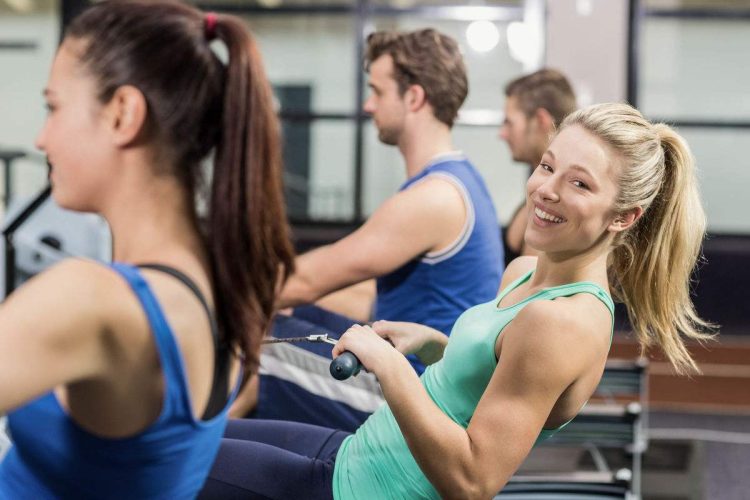Introduction
For many, “30 minutes of exercise a day” has become the gold standard for maintaining health. It’s simple, easy to remember, and often cited by public health organizations. While this recommendation certainly offers significant health benefits, it doesn’t tell the full story. Physical activity is not only about duration—it’s about diversity and quality.
If you’ve been consistently moving your body for 30 minutes a day but still feel stiff, weak, or stagnant in your progress, there’s a good chance you’re overlooking a critical component of fitness: resistance training. This article explores why 30 minutes alone may not be enough, what kind of training might be missing, and how to rebalance your routine for full-body health and long-term resilience.
Why 30 Minutes Became the Standard
The widely accepted “30 minutes a day” recommendation stems from public health guidelines encouraging adults to engage in at least 150 minutes of moderate aerobic activity per week. This might include brisk walking, cycling, or swimming. The goal is to promote cardiovascular health, reduce the risk of chronic disease, and support overall well-being.
However, those same guidelines also recommend incorporating muscle-strengthening activities on two or more days a week—something often overlooked or ignored in practice. Cardiovascular exercise is important, but by itself, it is not a complete strategy for physical fitness.
What You Might Be Missing: Resistance Training
Resistance training, also known as strength or weight training, is frequently left out of many people’s routines. This is especially true for individuals who rely exclusively on walking, jogging, or light cardio.
Neglecting resistance training has long-term consequences. As we age, muscle mass naturally declines—a process called sarcopenia. Without regular strength training, this decline accelerates, leading to reduced mobility, lower metabolism, increased injury risk, and diminished quality of life.
Incorporating resistance exercises helps preserve and build muscle, supports joint health, improves balance and coordination, enhances posture, and boosts metabolic rate. These are not just fitness benefits—they are essential for everyday functioning, especially as we grow older.
The Limits of Cardio Alone
While cardiovascular exercise strengthens the heart and improves endurance, relying solely on it can lead to imbalances. For example, cardio does little to stimulate bone density, develop muscular strength, or correct postural weaknesses.
In some cases, individuals who only perform cardio may even lose muscle mass if not balancing their activity with resistance-based movement. This not only makes fat loss harder but also weakens structural support in the body, making it more prone to injury.
For optimal health, cardio should be part of a broader plan that includes strength, mobility, and functional movement.
The Importance of Mobility and Flexibility
Many people confuse movement with mobility, but they’re not the same. Mobility refers to the ability of a joint to move through its full range of motion with control. Flexibility involves the length of muscles and the ability to stretch them.
Neglecting mobility work can result in joint stiffness, poor movement patterns, and increased injury risk—even if you’re exercising regularly. Incorporating dynamic stretching, bodyweight movements, and active mobility drills can help improve flexibility, enhance posture, and reduce discomfort during everyday activities.
This is especially important for desk workers and individuals who sit for prolonged periods, as restricted mobility often manifests in the hips, shoulders, and spine.
Don’t Forget Functional Movement
Functional movement training mimics real-life activities. It focuses on developing strength, stability, and coordination across multiple planes of motion. Think squatting, lifting, pulling, pushing, and twisting—basic movements you use every day.
Traditional gym routines sometimes isolate muscles in ways that don’t translate well to real life. Functional training focuses on integrated movement and is more aligned with how the body naturally operates.
Incorporating compound movements that engage multiple muscle groups not only makes your workouts more efficient but also prepares your body for the physical demands of daily living.
Recovery Matters Too
Exercising every day without proper recovery can backfire. Fatigue, irritability, poor sleep, and a plateau in performance can be signs of under-recovery.
Rest days are not about doing nothing—they’re about giving your body the chance to repair and adapt. Active recovery, such as walking, gentle stretching, or yoga, helps maintain movement while allowing the nervous system and muscles to recharge.
Overtraining is just as harmful as undertraining. Building rest into your routine isn’t lazy—it’s strategic.

Intensity and Focus Over Time Spent
The effectiveness of your workout is not just about how long you move—it’s about what you do during that time. A high-quality 20-minute strength session can be more beneficial than an unfocused 45-minute jog, depending on your goals.
Instead of obsessing over the clock, focus on:
- Choosing movements that challenge multiple muscle groups
- Using proper form and progressive resistance
- Being intentional with rest periods and effort level
- Prioritizing consistency over perfection
The body responds best to a variety of stimulus. Mixing training styles while giving your body time to adapt is key to long-term progress.
Conclusion
Yes, 30 minutes of exercise a day is better than nothing—and for many, it’s a fantastic starting point. But for truly balanced fitness, those 30 minutes must be used wisely. Without resistance training, mobility work, or functional movement, your routine is incomplete.
The human body is designed for more than just endurance. It needs strength, flexibility, control, and rest to thrive. If you want to age well, perform better, and feel more energized—not just survive, but thrive—you’ll need to move beyond just “30 minutes a day” and move with purpose.
You don’t need more time—you need a smarter plan.

















































